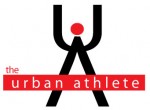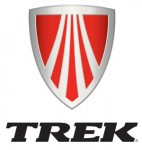Purpose: summarize three recent papers looking at the running economy of running barefoot
Three recent papers have been published looking at barefoot, vibrams, minimal shoes and cushioned running shoes and their associated running economy (i.e. energy cost associated with running at a specific speed).
The research is a bit murky. Those arguing in favour of barefoot or minimalist running suggest that this method of running is more efficient for two basic reasons:
1. there is less mass and therefore less work required to move the foot (older research here)
2. barefoot running allows the passive structures of the foot and calf to store and release passive energy
So what does the recent research say?
Here are the papers I will briefly review and as a spoiler I have quoted their conclusions directly in case you have somewhere else to be.
Perl et al (2012) - abstract here.
Minimally shod runners are modestly but significantly more economical than traditionally shod runners regardless of strike type, after controlling for shoe mass and stride frequency. The likely cause of this difference is more elastic energy storage and release in the lower extremity during minimal shoe running
Franz JR et al (2012) - abstract here.
Running barefoot offers no metabolic advantage over running in lightweight, cushioned shoes
Hansen et al (2011) - abstract here.
It was concluded that at 70% of vVO (2)max pace, barefoot running is more economical than running shod, both overground and on a treadmill.
So it looks like barefoot running is significantly more efficient than cushioned shoes in two studies but one study suggest that it isn’t. Here is a more detailed look at each study.
Study #1: Perl et al (2012) Barefoot(Vibrams) versus bulky, cushioned shoes
Main Finding: running barefoot/vibrams (even if you add weight to your feet that is the same as shoes) is more efficient than running with shoes.
This is a great and very comprehensive paper of Perl et al (2012). I will only focus on the running efficiency aspect of the paper but the paper explores kinematics and kinetics as well.
The authors investigated four trials of running. They used Vibrams as a surrogate for barefoot and called these minimal shoes. They investigated four trials of running:
- FFS in minimal shoes and ankle weights
- FFS in standard shoes (Asics Cumulous 349 grams)
- RFS in minimal shoes and ankle weights
- RFS in standard shoes.
The authors controlled for a number of variables that might effect economy:
- shoe mass
- foot strike
- running cadence (around 186 steps per minute)
They measured or calculated:
- The oxygen cost associated with running
- Joint kinematics and kinetics
- Arch strain and Achilles strain (from kinematic and kinetic data)
Each trial lasted a minimum of five minutes, with at least one minute of running after VO2 levels reached steady state. A metronome was used to keep the runner at his/her preferred stride frequency
Results
- No difference in running economy when comparing foot strike style regardless of the shoes. This is huge. it argues that running technique in terms of landing does not influence how efficient we are. But remember, this says nothing about INJURY.
- Minimal shoes (Vibrams) were more economical no matter what foot strike pattern. If running with a rearfoot pattern they were 2.41% more economical and if running with a forefoot pattern they were 3.32% more economical
- Most subjects were economical when running minimally but a huge range was observed. One individual was 9.6% more economical but one fellow was 7.32% more costly.
- Barefoot runners do not bend their knees more - there is not an energy cost associated associated with cushioning. This is often suggested but not supported.
Important Things to Remember
- These authors added mass to the minimal shoes (Vibrams) so we can expect that without adding mass the minimal shoes would be even more economical
- All runners were experienced barefoot runners and comfortable heel or forefoot striking.
- Cadence was controlled – very important
- We don’t know how other minimal shoes (e.g. racing flats) would compare. Is there something special about Vibrams that allow one to run as if barefoot or is this something shitty about running in standard cushioned running shoes. The next studies look at that. Kind of.
Study #2: Hansen et al
Main finding: In mostly inexperienced barefoot runners individuals who ran barefoot both on a treadmill and on track had better running economy than while running in shoes.
Study Set Up
- 10 healthy runners (two experienced barefooters)
- ran on a treadmill and on track at a pace comparable to 70% of VO2 max while running completely barefoot and while running in shoes (therefore 4 runs in total)
- track running speed was assessed with the Nike+ accelerometer
- no information on what running shoes were used
- no controls for shoe mass, foot strike pattern or cadence
Results
1. On the treadmill there was no statistically significant difference in oxygen cost when running in shoes or in barefeet
2. When running on the track running barefoot showed a trend to being more economical (Vo2 was 5.7% greater when shod - a huge difference compared to previous studies)
3. When the two barefoot conditions were combined (treadmill and track) and compared with the two running shoe conditions barefoot running was 3.8% more economical.
4. Rating of perceived exertion was consistently higher in shoes than barefoot
5. Heart rate was higher in shoes than barefoot on the treadmill only.
Comments/Limitations
The thrust of this paper is that running barefoot outside is more economical than running in big, bulky shoes. This is interesting since this is where races occur. However, a few limitations of this study when added together may seriously jeopardize this conclusion. Roger Kram and Jason Franz, the authors of the next study wrote an insightful letter to the editor suggesting that a systematic error in how running velocity was calculated would lead the authors to conclude that barefoot running is more economical when it is not. Thus, the barefoot runners ran slower than the shod runners and therefore consumed less oxygen. Let me lay out their argument:
1. Velocity was measured with the Nike+ accelerometer. It does this by knowing when the foot first strikes the ground and then leaves the ground (contact time) relative to how fast the foot moves horizontally during that time period.
2. The Nike+ assumes that you run with the same foot contact time when you are running to calculate your speed.
3. If the device was calibrated when wearing shoes we might have a case where the foot contact time is different in shoes than during barefoot (this was seen in a study by Squadronne).
4. Kram suggests that barefoot running has a shorter foot contact time therefore there is a bias in how the Nike+ reported the speed to the runner that was running.
5. With a shorter contact time during barefoot running the Nike+ would give an overestimated speed during running. Therefore, barefoot runners would have run slower than their counterparts thus the changes in VO2 seen in barefoot running versus shod are due to running slower not because of the shoes.
Study #3: Franz et al (2012) barefoot versus minimal shoes (Nike Mayflys)
This study has been blogged about previously here and here.
Main Finding: Barefoot running is not more economical than running with a light weight trainer even though there is less mass with barefoot running.
This great study looked at the oxygen cost while running barefoot (not with Vibrams but while wearing a thin sock) and in a minimal cushioned running shoe (the Nike Mayfly 150 grams). The authors also controlled for a number of variables:
1. Barefoot running experience (all were experienced)
2. Foot strike pattern (all used a midfoot strike)
3. Mass (lead strips were added to the barefoot condition and to the running shoe condition
4. Cadence was not controlled
Study Set up
Subjects ran barefoot and at multiples of the weight of their shoe (1x, 2x and 3x the weight). They also ran in the shoe with multiples of the weight added to their shoe. While running at a constant speed of 3.35 meters/second (about a 5 minute kilometre or 8 minute mile) the subject’s VO2 was calculated.
Results
Directly from the study:
Without added mass, the mean and gross metabolic power were both 2.1% lower when running in shoes compared to barefoot (BF0M vs. SH1M), but these differences were not statistically significant (p=0.092 and 0.118, respectively).
For eight of the twelve participants, running in the lightweight, cushioned shoes was less metabolically demanding than running barefoot, despite the greater mass.
Subjects selected 3.3% longer stride lengths during shod running. Importantly, the longer strides adopted when running in shoes reflected an effect of footwear and not of added mass; stride length did not significantly differ between BF0M and BF1M (p=0.342).
Main Points
1. Adding 100 grams of mass increases energy costs 1%
2. Barefoot running (with socks) is not more efficient versus light weight trainers despite the weight of the shoes.
3. Runners decreased their cadence and increased their stride length 3.3% in shoes
4. When running barefoot with added mass equal to the mass of the shoes the runners used 3-4% more oxygen when compared to running in shoes.
5. The authors suggest that running barefoot “costs” more oxygen because of the need to provide cushioning (e.g. more knee or hip flexion). However, the authors did not measure this and the kinematic data from the Perl study above suggests the exact opposite of this. In that study, running barefoot (in Vibrams) lead to less knee flexion (e.g. cushioning) when running.
Why do we have different results across studies?
Shitballs, I really don’t know for sure. But lets look at some ideas and differences between the studies.
First, the Hanson paper may be limited due to the means of measuring velocity in overground running and it does not provide much more insight than any of the previous studies in the past decade have so will limit the discussion to the Perl study and the Franz study.
The two great studies by Perl et al (2011) and Franz et al (2012) make two seemingly opposite conclusions. Both of these studies also controlled for many of the same variables with the exception of the Franz study which did not control for running cadence. However, there were differences between the two studies and a number of uncertainties. Those being:
1. The Perl study compared Vibrams versus a large cushioned shoe that weighs 349 grams. They concluded that even adding weight to the Vibrams to equal 349 grams the Vibrams were still more efficient (3% more O2 cost in the big shoes)
2. The Franz study compared barefoot (socks) running to running in minimalist shoes (shoes that had a sole but a limited upper). These authors found that even when the weight of the shoes equaled the barefoot condition with weight added shoes were always more economical (3-4% more O2 cost in barefoot).
3. The Franz study did not control for cadence and runners in shoes increased their stride length on average 3.3%.
4. We can’t conclude that barefoot runners in the Franz study bent their knees and hips more (e.g. the cost of cushioning). The authors did not measure this and the Perl study suggests that this does not happen.
5. We don’t know how minimal shoes (e.g racing flats or the shoes used in the Franz study) compare with big, bulky cushioned shoes (e.g the ones used in the Perl study). We also don’t know how running in Vibrams compares with running in socks although a previous study (Squadrone link here, although they made this conclusion in the discussion but there was no data in the results about this) suggests that Vibrams may be more efficient than barefoot alone.
Some thoughts…
It may be possible that running in Vibrams confers greater energy efficiency than running in barefeet alone and that this could be similar to the greater efficiency achieved in the lightweight trainers (e.g. the Nike Mayflys studied by Franz) versus running in socks. These conflicting results may not be conflicting at all since they did not measure exactly the same thing. It would interesting to know two things:
1. What is the difference between running in the Mayflys (lightweight trainers) and big, bulky shoes (i.e. the shoes used in the Perl study that compared Vibrams with shoes)
2. What is the difference between running in Vibrams and running in the socks that the Franz studied compared the Mayflys with.
The implication for these questions is whether it is plausible that running lightweight running shoes (the Mayflys at 149 grams) is similar to running in Vibrams (149 grams). If these two footwear choices are comparable then we don’t have any discrepancy between the studies. It suggests that light weight footwear (Nike Mayfly or Vibrams) is more efficient than barefoot/socks even when the weight of the shoes are controlled for (i.e. the conclusion of the Franz study) and that Lightweight footwear is more efficient than big, bulky shoes even with the weight of the shoes are controlled for (i.e. the conclusion of the Perl study).
Implications
1. The Franz study certainly argues in favour of running in light weight trainers. It suggests that you get many of the benefits of barefoot running without the drawbacks of the added weight associated with the large cushioned shoe.
2. The Franz study also suggests that we don’t always have to shorten our stride to get efficiency. This is sometimes advocated but the study suggests that a longer stride is associated with improved efficiency when wearing shoes. This is not new and was the conclusions of Cavagna’s research for years (sample abstract here) when he looked at preferred stride frequency. He basically suggested that the body finds the stride frequency that is most efficient for it. Sounds simple. The body seems to have some inherent wisdom.
3. We have no idea what happens after running for 90 minutes. This is what I am interested in. I think the arguments for barefoot running and performance can really break down when it comes to running at extremes of fatigue. We see this anecdotally with barefoot runners starting to heel strike at the end of races. The cushioning cost has to come from somewhere and I would rather this have been something passive (like my shoe) than something that can fail and fatigue (e.g. arch strain, achilles tendon etc).



